#Kannada culture
Quote
The early assertion of Kannada nationalism was spearheaded by the Hindu upper caste business and literary leaders from the Bombay Karnataka region, the Kannada-majority districts that were part of the Bombay Presidency. This was an area geographically and politically proximate to Tilakite and Savarkarite Hindu nationalism. In such Kannada nationalistic literature, the glory of the Hindu past was constantly evoked to inculcate a sense of pride in Kannada culture. For instance, Alur Venkatarao, termed the Kannada kulapurohita or the high priest of Kannada, consistently stoked the fire of nationalist pride by igniting sentiments attached to a 'destroyed' Hindu past.
Shivasundar, ‘The Long March of Hindutva in Karnataka’, India Forum
#India Forum#Shivasundar#india#Karnataka#Kannada nationalism#Hindu upper castes#business leaders#literary leaders#Bombay Karnataka#Bombay Presidency#Tilakite Hindu nationalism#Savarkarite Hindu nationalism#Kannada nationalistic literature#Hindu past#Kannada culture#Alur Venkatarao#Kannada kulapurohita
7 notes
·
View notes
Text
Kantara Chapter 1 - The Prequel of a Blockbuster Kannada Film That You Must Watch
We hope you enjoyed reading this article about Kantara Chapter 1, the prequel of a blockbuster Kannada film that you must watch. We would love to hear your feedback, questions, or comments on the article. Please leave your thoughts in the comment section
Time to Read About Kantara Chapter 1 – The Prequel of a Blockbuster Kannada Film
Kantara Chapter 1 is a Kannada film that is expected to release in 2024. It is the prequel to Kantara, which was a blockbuster in 2022. The film explores the origin of the Panjurli Daiva and the Guliga Daiva, the deities that protect the forest and its people. The film is set in the 4th century AD and stars Rishab…

View On WordPress
#: Kantara Chapter 1#blockbuster#culture#fantasy#Guliga Daiva#history#Hombale Films#Kannada film#Kantara#KantaraChapter1#mythology#nature#Panjurli Daiva#prequel#Rishab Shetty
1 note
·
View note
Video
youtube
ISKCON Raichur Janmashtami 2023 Cultural carnival
#youtube#iskconraichur janmashtami krishna iskconraichurkalpataru krishnajanmashtami iskcon multiscreen kannada culture
0 notes
Text
The journey of the Kannada language from its ancient roots to its present-day status as a language of literary distinction has been marked by remarkable achievements and contributions.
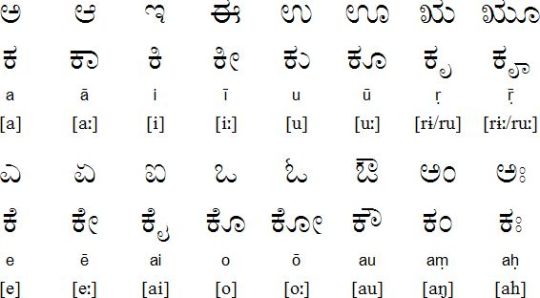
1 note
·
View note
Text
Kannada kama kathegalu
youtube
#Kannada kama kathegalu#kannada folk songs#hot#youtube#beauty#celebrities#culture#fashion#travel#sexy ebony#sexy breast#hit the road#auntie#Hot celebrate#Kannada ogattu sex stories#student#food#Youtube
1 note
·
View note
Text
Kannada Language Learning: A Comprehensive Guide
Are you interested in learning Kannada, one of the oldest and most beautiful Dravidian languages in India? Whether you're planning to travel to Karnataka, have business dealings with Kannada speakers, or simply want to expand your linguistic horizons, learning Kannada can be a rewarding experience.
#islandlife#carribean#island#ryhthm languages#learning languages#languages#language#world languages#explore language learning#international languages#culture in languages#kannada language
0 notes
Text
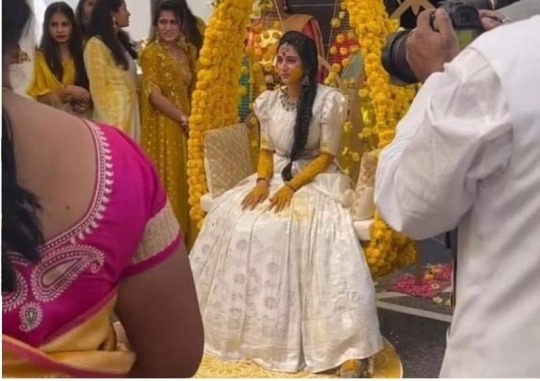

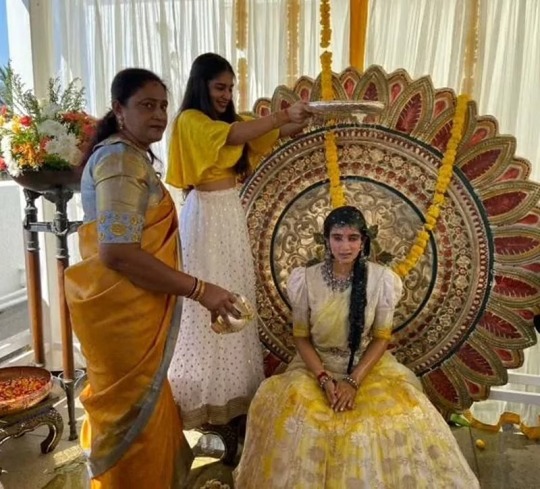
0 notes
Video
youtube
Mareyo Dunte Mysura Doreya Song‘ಮರೆಯೋದುಂಟೆ ಮೈಸೂರು ದೊರೆಯ Mysuru Dasara 20...
#youtube#Kannada Folk Song#Mysuru Dasara Cultural Programmes 2022#Mysuru Dasara 2022#Mysuru Dasara Celebrations#Nada Habba#Nada Habba2022#Song In Chikkagadiyara Mysore
0 notes
Note
PLEASSEEE TELL US ABOUT YOUR MYTHIC MUMBATTAN AU PLEASE PLEASEE



>:) very well, my people
(currently screaming because i wrote a response but i accidentally CTRL+Zd everything out of existence lmao)

The Mythic Mumbattan AU is me pouring the following ingredients into an explosive mess:
Hindu mythology and Indian culture overload
college!Spider-Man shenanigans
revamping the original Spider-Man: India plotlines and expanding the lore
character studies!!! my favourite :)
a potential and self-indulgent crossover with another indian superhero (if we ever get there)
the horrors.
Pavitr and his personal cast!!! just!!!! THEY!!!!!!
(keep reading if you want more goodies >:D)
So the CoffeeBean is a coffeeshop that existed in the mainstream Marvel universe and in real life but that's another thing; the cast below frequently drop by to hang out with one another. The Mumbattan-equivalent of the CoffeeBean is actually the TeaHouse which is another real life thing but shh and so in-universe they're called the TeaHouse gang, but in my heart they'll always be the CBG 😌
Everyone goes to Brihanmumbai State University (BSU). Lots of crazy things happen here. Pavitr's relationship with the others is always in flux but ultimately they're super close with one another (fuck it, they might as well be poly). Their personalities I try to keep as close as I can to the mainstream universe E616 comics, but I'm being creative and letting a few things from the SMI comics and ATSV influence them:
Pavitr Prabhakar — Tamilar (Tamil); he has the charm and skills from his ATSV counterpart and the smarts from his SMI counterpart; he can be a bit of a jerk and a flake, but he tries to be a good friend, and is much more open than he was in high school.
Meera Jain — Kannadiga (Kannada); basically how I've written her in tibim: everyone's first impression of her is that she's carefree and seems to not worry too much about life. She secretly deals with a lot of self-doubt and personal fears, but the gang's presence is enough for her to push them aside.
Gayatri Singh — Gujarati (Gujarati); she's probably the most quiet of the gang, but undeniably the kindest. She's more similar to Pavitr, in that she's stubborn and quick to judge. She's the glue of the gang and always willing to extend a hand to others
Hari Oberoi — Maharashtrian (Gujarati/Marathi/Hindi); the son of the man who tried to bring literal hell to earth, but other than that he's okay. He's a people-pleaser despite having everything, and struggles with his own self-image and who he should become
Ekansh "Flash" Travasso — Goan (Marathi); the high school jock who's grown more understanding and compassionate. He knew Pavitr the longest, so they have quite an interesting collection of interactions. (ALSO I'M SO SORRY I WROTE THOMPSON IN THE ART POST INSTEAD OF TRAVASSO 😭 maybe i should go back and edit that)
Spider-Man is Spider-Man'ing. Mumbattan loves him (sort of. Inspector Singh has mixed feelings). But another question: why is that every where Spider-Man goes the demons of yore all start showing up and begin wrecking havoc? Why is that? I am taking the magic in Spider-Man: India and dialing it up to five million — horrors and magic of every kind! I can get my hands real dirty and /really/ push Pavitr to his limit >:)
That is all for now. There will be more characters, but they'll show up in time. Lots of stories too, all old and new and revamped and crazy, but they'll be told when they're ready. Perhaps this is enough to satiate everyone's hunger? (unless you want to know something else, then by all means go ahead and ask!!!)
#sorry this took so long i was procrastinating#and then all my words disappeared and i had to physically go and touch grass. sometimes technology and i don't mix#but anyway#mythic mumbattan au#my beloved#i am soooooo insane about these guys. you have no idea#me waiting for all the words to come pouring out of my brain ykykyk#coffee bean gang#spider man#pavitr prabhakar#gayatri singh#meera jain#hari oberoi#flash travasso#spider man india#agni of wisdom#agnirambles
160 notes
·
View notes
Text
The use of English shorthand and typewriters expanded towards the end of the 19th century in clerical work in the major cities of the subcontinent. The use of shorthand in Indian languages, however, developed not in the context of office work but to meet the requirements of the new public sphere, particularly the quick notation of public speeches for reporting in newspapers. This led to the invention of new speed scripts, atitvarene lihiṇyāchī paddhatī (very speedy writing) or laghulekhan (shorthand) in Marathi, which relied heavily on Pitman and Munson’s English shorthand. Arguably the first use was in 1874 by RB Gunjikar [...]. Gajananbhau Vaijya, an English shorthand writer and reporter with the Indian Statesman, invented another speed script expressly for the quick notation of speeches [...]. Notably, Indian-language shorthand remained in the sphere of handwriting, as typewriters for non-Latin scripts did not become widespread in the subcontinent until the mid 20th century. [...]
[I]t is actually Bhujangrao Mankar, inventor of a third shorthand script with the book Laghulekhankalā (1897), who announced himself on the title page as the creator of Marathi and Gujarati shorthand. Mankar was a well-known English shorthand reporter for the press and the Criminal Investigation Department (CID) in Bombay for all manner of political meetings in the early 20th century. [...]
---
As Bernard Bate noted, Tamil shorthand came into its own when the colonial government attempted to acquire written transcripts of possibly seditious speeches during the Swadeshi movement.
In Bombay, too, shorthand found widespread application in CID surveillance with the growth in nationalist meetings and activity in the 1920s. Sub-inspectors could learn Marathi shorthand as an optional subject in the Central Police Training School; the usual practice was to pass a test in the office and regularly test for speed.
In the trial of the Ali brothers in Karachi following the Khilafat movement, speeches by Mohamed Ali and Shaukat Ali were entered as evidence of their seditious activity.
Similarly, charges against Communist leaders SA Dange, RS Nimbkar, and others in the Meerut conspiracy case (1929–33) were also based on their public speeches.
The cross-examination of witnesses turned on the accuracy of the transcripts and the methods used to obtain them and provides a rich window into the work of memory, notation, and translation involved in producing a speedy verbatim transcript of a public speech, and the issues of legibility, authenticity, and transparency that linked scribe, script, and language to state surveillance.
---
Police reporters usually translated the shorthand transcripts of speeches in various languages into English longhand as soon as possible. In Karachi the Ali brothers’ Urdu speeches were recorded in Urdu shorthand. In Belgaum in June 1921, however, sub-inspectors of the Pune CID took down their Urdu and English speeches in Marathi shorthand. During a meeting in Bagalkot, also in northern Karnataka, Shaukat Ali’s speech in Urdu was orally translated sentence by sentence into Kannada as he spoke [...]. There was thus much processing of sound, meaning, and sign across languages, scripts, memories, and individuals, all at high speed. [...] The inspector [...] Deshpande mentioned a critical aspect of Pitman-based shorthand writing: since the signs matched specific sounds, he did not pay much attention to the content of the speech; he just noted down the sounds as best he could, even if he didn’t know the meanings of words. Gaps between sounds and meaning, it would appear, were filled in either during transcription through memory recall or by the CID itself. [...] These practices of notation, translation, and judicial discourse grappled with a spectrum of textual reproduction of oral utterances, from gist to verbatim.
---
Text by: Prachi Deshpande. Scripts of Power: Writing, Language Practices, and Cultural History in Western India. 2023. [Bold emphasis and some paragraph breaks/contractions added by me.]
78 notes
·
View notes
Text

Today marks the 6th death anniversary of the legendary actress #Sridevi, who left an indelible mark on the Indian film industry with her exceptional talent and unforgettable performances. She was a true icon and a shining star in the world of cinema, and her untimely death has left a void that can never be filled. Sridevi began her career as a child artist in Tamil films, and later went on to become one of the most popular and accomplished actresses in Indian cinema. She starred in over 275 films across various languages, including Tamil, Telugu, Hindi, Malayalam, and Kannada. Her versatility as an actress was unparalleled, and she effortlessly portrayed a wide range of characters, from the bubbly girl-next-door to the fierce and powerful woman. Sridevi was not just a great actress, but also a trendsetter, a style icon, and a cultural phenomenon. She was the first female superstar of Indian cinema, and her films continue to inspire and entertain audiences to this day. Her performances in iconic films such as "Chandni," "Mr. India," "Sadma," "English Vinglish," and "Mom" are etched in our memories forever. Despite achieving so much success and fame, Sridevi was known for her humility and down-to-earth nature. She was a devoted wife and mother, and her sudden death in 2018 shocked the entire nation. Her fans, colleagues, and the film fraternity continue to mourn her loss even today, as her legacy lives on through her work and the countless lives she touched with her talent and grace. On this 6th death anniversary of Sridevi, let us remember her fondly and celebrate her life and her contributions to Indian cinema. Her unparalleled talent and her infectious smile will always be missed, but her legacy will continue to inspire generations of actors and film lovers. Rest in peace, Sridevi. You will always be remembered and cherished.
7 notes
·
View notes
Text
Words borrowed from other languages in English
Very incomplete list, based mostly on The Languages of the World (3rd ed.), Kenneth Katzner, 2002 + a heavy use of Wiktionary. some notes:
Many of these words have passed through multiple languages on their way to English (e.g. Persian -> Arabic -> Spanish -> French -> English); in that case I usually list them under the first language that used them in the same acception as English.
I generally don't include words whose ancestors already existed in Middle English, unless their origin was exotic enough to be interesting.
The vast majority of borrowings are terms very specific to their culture of origin; I generally only include those that are either very well known amng English-speakers, or of general use outside that culture.
INDO-EUROPEAN FAMILY (West and South Eurasia)
Hellenic
Greek: angel, chronometer, democracy, encyclopedia, geography, graphic, hieroglyphic, homogeneous, hydraulic, meter, microscope, monarchy, philosophy, phobia, photography, telephone, and way too many other scientific or technical terms to count
Germanic
Afrikaans: aardvark, apartheid, fynbos, rooibos, springbok, trek, veld, wildebeest
Danish: Lego, simper
Dutch: brandy, bumpkin, coleslaw, cookie, deck, dock, dollar, landscape, freight, furlough, maelstrom, noodle, Santa Claus, waffle, walrus, yacht
German: aurochs, bildungsroman, blitzkrieg, cobalt, dachsund, eigenvector, ersatz, gestalt, hamburger, hinterland, kindergarten, kohlrabi, lager, poodle, quark, sauerkraut, wanderlust, yodel, zeitgeist
Icelandic: eider, geyser
Norwegian: auk, fjord, krill, lemming, narwhal, slalom, troll
Swedish: lek, mink, ombudsman, rutabaga, smorgasbord, tungsten
Yiddish: bupkis, chutzpah, kvetch, putz, schlemiel, schmaltz, schmooze, schtick, spiel, tchotchke
Slavic
Czech: robot
Russian: fedora, glasnost, intelligentsia, kefir, mammoth, pogrom, samizdat, steppe, sputnik, troika, tsar, vodka
Serbo-Croat: cravat, paprika
Celtic [many of these words are shared between the two languages]
Irish: bog, galore, gaol, geas, glen, orrery, shamrock, slob, whiskey
Scottish Gaelic: bard, bunny, cairn, clan, loch, ptarmigan, ?scone, slogan
Italic-Romance
†Latin: [way too many]
French: [way too many]
Italian: allegro, aria, balcony, bandit, bravo, calamari, casino, chiaroscuro, crescendo, contrapposto, fresco, gazette, ghetto, gusto, inferno, lava, mafia, malaria, pants, quarantine, tempo, umbrella, vendetta, volcano
Portuguese: baroque, brocade, cachalot, cobra, creole, flamingo, petunia, pimento, zebra
Spanish: abalone, armadillo, bolas, bonanza, canyon, cargo, chupacabra, cigar, cilantro, embargo, gaucho, guerrilla, junta, manta, mesa, mosquito, mustang, patio, pueblo, rodeo, siesta, tornado, vanilla
Iranian
Persian: bazaar, caravan, checkmate, chess, crimson, dervish, divan, jackal, jasmine, khaki, kiosk, lemon, lilac, musk, orange, pajama, paradise, satrap, shawl, taffeta
Indo-Aryan
†Sanskrit: brahmin, Buddha, chakra, guru, karma, mantra, opal, swastika, yoga
Bengali: dinghy, jute, nabob
Hindi: bandana, bungalow, cheetah, chintz, chutney, coolie, cot, dungaree, juggernaut, lacquer, loot, rajah, pundit, shampoo, tom-tom, thug, veranda
Marathi: mongoose
Romani: hanky-panky, pal, shiv
Sinhalese: anaconda, beriberi, serendipity, tourmaline
DRAVIDIAN FAMILY (Southern India)
Kannada: bamboo
Malayalam: atoll, calico, copra, jackfruit, mahogany, mango, pagoda, teak
Tamil: curry, mulligatawny, pariah
Telugu: bandicoot
URALIC FAMILY (Northern Eurasia)
Finnic
Finnish: sauna
Saami: tundra
Samoyedic
Nenets: parka
Ugric
Hungarian: biro, coach, goulash, hussar, puszta, tokay
VASCONIC FAMILY (Northern Pirenees)
Basque: chaparral, chimichurri, silhouette
TURKIC FAMILY (Central Eurasia)
†Old Turkic: cossack, yurt
Tatar: ?stramonium
Turkish: baklava, balaclava, bergamot, caftan, caviar, harem, janissary, kebab, kismet, minaret, pastrami, sherbet, tulip, yoghurt
Yakut: taiga
MONGOLIC FAMILY (Mongolia and surrounding areas)
Mongol: horde, khan, ?valerian
SINO-TIBETAN FAMILY (China and Southeast Asia)
Tibeto-Burman
Tibetan: lama, panda, tulpa, yak, yeti
Sinitic [Chinese languages closely related, not always clear from which a borrowing comes]
Hokkien: ?ketchup, sampan, tea
Mandarin: chi, dao, dazibao, gung-ho, kaolin, oolong, shaolin, shanghai, yin-yang
Min Nan: nunchaku
Yue (Cantonese): chop suey, dim sum, kowtow, kumquat, lychee, shar-pei, ?typhoon, wok
TUNGUSIC FAMILY (Eastern Siberia)
Evenki: pika, shaman
KOREANIC FAMILY (Koreas)
Korean: bulgogi, chaebol, hantavirus, kimchi, taekwondo
JAPONIC FAMILY (Japan)
Japanese: banzai, bonsai, dojo, emoji, geisha, ginkgo, hikikomori, honcho, ikebana, kamikaze, karaoke, koi, kudzu, manga, origami, pachinko, rickshaw, sake, samurai, sensei, soy, sushi, tofu, tsunami, tycoon, zen
AUSTRONESIAN FAMILY (maritime Southeast Asia and Oceania)
Western Malayan
Javanese: ?junk [ship]
Malay: amok, cockatoo, compound [building], cootie, durian, kapok, orangutan, paddy, pangolin, rattan, sarong
Barito
Malagasy: raffia
Phlippinic
Cebuano: dugong
Ilocano: yo-yo
Tagalog: boondocks
Oceanic
Hawai'ian: aloha, hula, luau, poi, wiki
Maori: kauri, kiwi, mana, weta
Marshallese: bikini
Tahitian: pareo, tattoo
Tongan: taboo
TRANS-NEW GUINEAN FAMILY (New Guinea)
Fore: kuru
PAMA-NYUNGAN FAMILY (Australia)
Dharug: boomerang, corroboree, dingo, koala, wallaby, wobbegong, wombat, woomera
Guugu Yimithirr: kangaroo, quoll
Nyungar: dunnart, gidgee, quokka
Pitjantjatjara: Uluru
Wathaurong: bunyip
Wiradjuri: kookaburra
Yagara: dilly bag
AFRO-ASIATIC FAMILY (North Africa and Near East)
Coptic: adobe
Berber
Tachelhit: argan
Semitic
†Punic: Africa
Arabic: albatross, alchemy, alcohol, alcove, alfalfa, algebra, alkali, amber, arsenal, assassin, candy, coffee, cotton, elixir, gazebo, gazelle, ghoul, giraffe, hashish, harem, magazine, mattress, monsoon, sofa, sugar, sultan, syrup, tabby, tariff, zenith, zero
Hebrew: amen, behemoth, cabal, cherub, hallelujah, kibbutz, kosher, manna, myrrh, rabbi, sabbath, Satan, seraph, shibboleth
NIGER-CONGO FAMILY (Subsaharan Africa)
unknown: cola, gorilla, tango
Senegambian
Wolof: banana, fonio, ?hip, ?jigger [parasite], karite, ?jive, yam
Gur-Adamawa
Ngbandi: Ebola
Kwa
Ewe: voodoo
Volta-Niger
Igbo: okra
Yoruba: gelee [headgear], mambo, oba, orisha
Cross River
Ibibio: calypso
Bantu
Lingala: basenji
Kikongo: ?chimpanzee, ?macaque, ?zombie
Kimbundu: ?banjo, Candomblé, gumbo, macumba, tanga
Swahili: askari, Jenga, kwanzaa, safari
Xhosa: Ubuntu
Zulu: impala, mamba, vuvuzela
KHOE-KWADI FAMILY (Southwest Africa)
Khoekhoe (Hottentot): gnu, kudu, quagga
ESKIMO-ALEUT FAMILY (Arctic America)
Greenlandic Inuit: igloo, kayak
Inuktikut: nunatak
ALGIC FAMILY (Eastern Canada and northeast USA)
†Proto-Algonquin: moccasin, opossum, skunk
Cree: muskeg, pemmican
Mikmaq: caribou, toboggan
Montagnais: husky
Narragansett: ?powwow, sachem
Ojibwe: chipmunk, totem, wendigo, woodchuck
Powhatan: persimmon, raccoon
SALISHAN FAMILY (Pacific coast at the USA-Canada border)
Chehalis: chinook
Halkomelem: sasquatch
Lushootseed: geoduck
IROQUOIAN FAMILY (Eastern North America)
Cherokee: sequoia
SIOUAN FAMILY (Central USA)
Lakota: teepee
MUSKOGEAN FAMILY (Southeast USA)
Choctaw: bayou
UTO-AZTECAN FAMILY (Southwest USA and north Mexico)
Nahuatl: atlatl, avocado, chili, cocoa, coyote, chocolate, guacamole, hoazin, mesquite, ocelot, quetzal, tamale, tegu, tomato
O'odham (Pima): jojoba
Shoshone: chuckwalla
Yaqui: ?saguaro
MAYAN FAMILY (Southern Mexico and Guatemala)
Yucatec Maya: cenote, Chicxulub
ARAWAKAN FAMILY (Caribbeans and South America)
†Taino: barbecue, cannibal, canoe, cassava, cay, guava, hammock, hurricane, iguana, maize, manatee, mangrove, maroon, potato, savanna, tobacco
Arawak: papaya
CARIBAN FAMILY (Caribbean coast of South America)
unknown: curare
Galibi Carib: caiman, chigger, pawpaw, peccary, yucca
QUECHUAN FAMILY (Andes)
Quechua: ?Andes, caoutchouc, coca, condor, guano, llama, mate, poncho, puma, quinine, vicuna
AYMARAN FAMILY (Andes)
Aymara: alpaca, chinchilla
TUPIAN FAMILY (Brazil)
[borrowings are often shared between these two languages]
†Old Tupi: ananas, arowana, Cayenne [pepper], jaguar, manioc, piranha, tapioca
Guarani: cougar, maracuja, Paraguay, petunia, toucan
CREOLE LANGUAGES (worldwide, mixed origin)
English-derived
Chinese Pidgin English: chopstick, long time no see, pidgin, taipan
Jamaican Creole: dreadlocks, reggae
Chinook-derived
Chinook Jargon: potlatch
EDIT 08-01-24: added lots more examples, especially African, Asian, and North American languages. Still not done.
EDIT 17-01-24: finished adding examples, more or less.
EDIT: 18-02-24: apparently not (cheetah).
EDIT: 20-05-24: nope (mosquito)
16 notes
·
View notes
Video
youtube
ISKCON Raichur Janmashtami 2023 Cultural carnival
#youtube#iskconraichur janmashtami krishna iskconraichurkalpataru krishnajanmashtami iskcon multiscreen kannada culture
0 notes
Note
Teach me kannada
ugh this is such a big regret for me
basically since i grew up in the uk, my english (non-native second language, etc etc) is better than my (native, first language) kannada which is super disappointing to me as someone who loves india and indian culture, and as someone who sometimes wishes that my parents just stayed in india and i wouldn't have such a conflicting identity
but anyway, some basic (hubbali/dharwad?) phrases for you (fyi i cant spell in kannada):
neevu heggidiri - how are you? (formal)
heggidiya kanno - equivalent of hey bro, whats up
naayi - dog, so essentially a common insult
kothi - monkey, another insult, etc etc
uru ____ - add an animal insult to the end (usually naayi) to get a quick, simple insult!
...and here you go! the average kannadiga's starter pack to navigating kannada. from here, combine insults to seamlessly transition from beginner to foul-mouthed, savage vellhigh-boss!
@manujanolavu add more if yk any!
15 notes
·
View notes
Text
Bollywood Vs The South Indian Cinema
Introduction to Bollywood and South Indian Film Industries

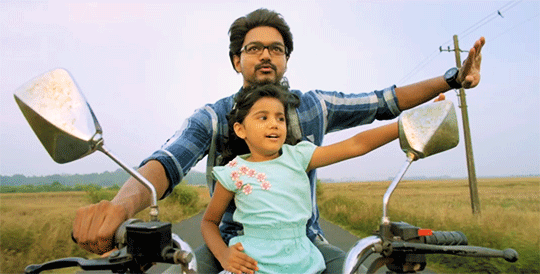
India is renowned for its vibrant and diverse film industries, with Bollywood representing the Hindi-language cinema based in Mumbai and the South Indian movie industry encompassing Tamil, Telugu, Malayalam, and Kannada films. Each of these industries has its own unique characteristics, cultural influences, and star power that have captivated audiences worldwide. In this article, we explore the dynamic landscape of Bollywood and South Indian cinema, delving into their historical evolution, box office impact, global recognition, stylistic elements, talent pool, evolving trends, and the challenges and opportunities they face in the ever-changing world of cinema.
Overview of Bollywood and South Indian Movie Industries
Introduction to Bollywood and South Indian Film Industries
Bollywood, the Hindi-language film industry based in Mumbai, and the South Indian movie industry, comprising Tamil, Telugu, Kannada, and Malayalam cinema, are two powerhouses of Indian cinema known for their unique styles and storytelling.
Historical Development and Growth
Bollywood traces its roots back to the early 20th century, while South Indian cinema has a rich history dating back to the 1930s. Both industries have evolved over the years, embracing new technologies and trends to captivate audiences worldwide.
Cultural Influences and Diversity in Bollywood and South Indian Films

Themes and Storytelling in Bollywood Films
Bollywood films often explore themes of love, drama, and family relationships, blending extravagant song-and-dance sequences with emotional storytelling that resonates with audiences of all ages.
Regional Diversity in South Indian Cinema
South Indian cinema, on the other hand, boasts a diverse range of genres and storytelling techniques across its different language industries, showcasing rich cultural traditions and narratives unique to each region.
Box Office Success and Market Reach of Bollywood vs South Indian Cinema
Box Office Performance of Bollywood Films

Bollywood films have a global appeal and consistently dominate the Indian box office, with big-budget productions and star-studded casts drawing massive audiences both domestically and internationally.
Market Dominance of South Indian Cinema in Regional Markets
While Bollywood enjoys a wide reach, South Indian cinema holds sway in its respective regional markets, with loyal fan bases and a steady stream of hit films that cater to the diverse cultural preferences of audiences in the South.
Impact of Bollywood and South Indian Films on Global Cinema
International Recognition and Film Festivals

Both Bollywood and South Indian films have garnered international acclaim, with entries in major film festivals and recognition for their unique storytelling, performances, and technical brilliance that transcend cultural boundaries.
Global Box Office Influence
The global popularity of Bollywood and the rising profile of South Indian cinema have expanded the reach of Indian films on the world stage, influencing trends in filmmaking and attracting a diverse audience eager to experience the magic of Indian cinema.# Unique Characteristics and Stylistic Elements in Bollywood and South Indian Movies
## Musical Elements in Bollywood Films
Bollywood movies are known for their infectious songs and dance sequences that range from emotional ballads to energetic dance numbers. These musical interludes often become chart-topping hits and play a significant role in the storytelling of the film.
## Action and Visual Effects in South Indian Cinema
South Indian cinema, particularly in the Tamil and Telugu industries, excels in high-octane action sequences and cutting-edge visual effects. From gravity-defying stunts to larger-than-life fight scenes, South Indian movies set the bar high when it comes to adrenaline-pumping action on screen.
Talent and Star Power: A Comparison between Bollywood and South Indian Film Industry
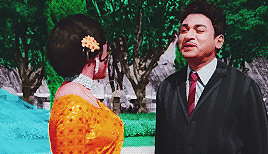
## Superstars of Bollywood vs South Indian Cinema
Bollywood boasts of iconic stars like Shah Rukh Khan, Salman Khan, and Aamir Khan who have a massive global fan following. On the other hand, South Indian cinema has its own galaxy of superstars including Rajinikanth, Vijay, and Prabhas, who command immense popularity and loyalty from their fans.
## Emerging Talent and New Faces in the Industry
Both industries are witnessing the rise of talented newcomers who are making a mark with their fresh acting skills and unique personas. Whether it's Bollywood's Sara Ali Khan or South Indian sensation Rashmika Mandanna, the influx of new talent ensures a dynamic and evolving film landscape.
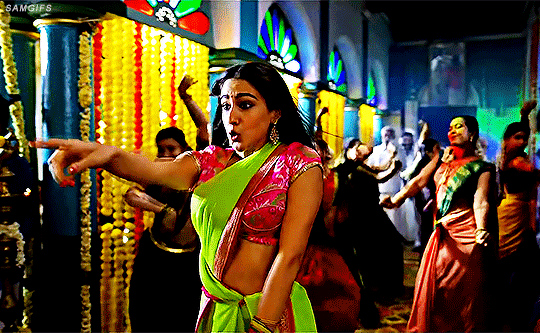
# Evolution and Trends in Bollywood and South Indian Cinema

## Technological Advancements and Digital Impact
With advancements in technology, both Bollywood and South Indian cinema are embracing CGI, VFX, and digital filmmaking techniques to enhance the visual appeal of their movies. This digital revolution has revolutionized the way films are made and consumed, opening up new possibilities for storytelling.
## Changing Audience Preferences and Genre Shifts
Audiences' tastes are constantly evolving, leading to a shift in the kinds of films being made in both industries. While Bollywood is exploring diverse genres beyond traditional romances and dramas, South Indian cinema is experimenting with unconventional narratives and pushing the boundaries of storytelling.
# Challenges and Opportunities for Growth in Bollywood and South Indian Movie Industries
## Piracy and Copyright Issues
One of the major challenges faced by both industries is piracy and copyright infringement, which affects the revenue of filmmakers and producers. Finding effective ways to combat piracy and protect intellectual property rights is crucial for the sustainable growth of the Bollywood and South Indian movie industries.
## Collaborations and Co-Productions for Global Reach
To expand their reach and appeal to a global audience, collaborations and co-productions between Bollywood and South Indian filmmakers are becoming increasingly common. By joining forces and sharing expertise, the industry can leverage international markets and create content that resonates with a diverse audience worldwide.As we conclude our exploration of the Bollywood and South Indian movie industries, it is evident that both have made significant contributions to the world of cinema, showcasing diverse storytelling, cultural richness, and immense talent. While Bollywood's global reach and iconic status continue to shine, the South Indian film industry's regional dominance and unique offerings are equally noteworthy. With ongoing evolution, emerging trends, and the constant pursuit of excellence, these industries stand poised to shape the future of Indian cinema and captivate audiences for generations to come.
#desi teen#music#love#cinema#bollywood#kollywood#kollycinema#friends#sandalwood#tamil cinema#south indian
4 notes
·
View notes
Text
A Movie Rant on a Fic Review blog (LMAO)
So, let me begin this post by saying I'm sorry for being MIA for nearly 2 years. I enrolled in a master's course and I've been majorly occupied by it. Honestly it's exhausting, tiring and it's making me question the way I look at the world every second of my life - I'd hate it completely if not for some of the few points I genuinely enjoy about it.
And it is one of those points I want to discuss in this post. Those few of you who are movie enthusiasts (no matter the language barrier) should have heard some whisper of a movie called 'Kantara' very recently. Today, I'm here to say that this is one of those movies from my home - from my very culture - that is making me proud of my roots. So I want to talk a bit about this movie, not as a review, but as a discussion of my culture and what it means to be showcased in such a context. So I apologise if it doesn't serve as a true review since I haven't really done one before.

'Kantara' (ಕಾಂತಾರ / kɑːⁿt̪ɑːrʌ), translated as 'mystical forest' is a Kannada-language Indian film and is set in contemporary times in Mangaluru in Karnataka and based on the traditions of that land. The reason I say 'land' is because the issue taken up in the film is about the ownership of land: of divine powers that dictate the lives of people living in a close-knit community living on the edges of forestlands, the powers of the state, and the power of greed of a man with respect to that land. The interplay of these factors is brilliantly shown in the film through the direction and screenplay as well as acting. Coming from the banner of Hombale films and director/actor Rishabh Shetty, Kantara makes brilliant use of a relatively simple plot - based on existing legends - through creative means and innovative storytelling that captures the viewer's attention throughout the film. It is comedic, thrilling, action-packed, and scary (in a few, perfect parts) but most importantly it captures the essence of the very issue it seeks to showcase: does divinity have any power over the modern lifestyles developed by work-and-wealth-centric societies?
In my religion and culture (Indic), we believe that nature and humans are equal participants in a healthy relationship which is why we respect and worship the wild. We believe in spirits of the land, descending from brave souls with divine powers, called 'demigods' and we worship them because they protect our existence and well-being. Since they are volatile beings, the rituals of appeasing them are sometimes garish and primitive, but they are also turned into art forms because of the centuries through which they have been performed. You might have heard of 'Diwali' (or Deepavali) and 'Dussehra' (or Dasara) which are widely celebrated festivals in India but we are a diverse land with multiple communities, each one having its own festivals. While I do not directly belong to the sub-culture discussed in the film, I do understand its core ideologies because they are similar to mine. 'Bhoota Kola' (Spirit Play/Ritual) (click on link to learn more about it) is one such celebration that is the subject of Kantara that my definition above describes (and which the above poster depicts too).
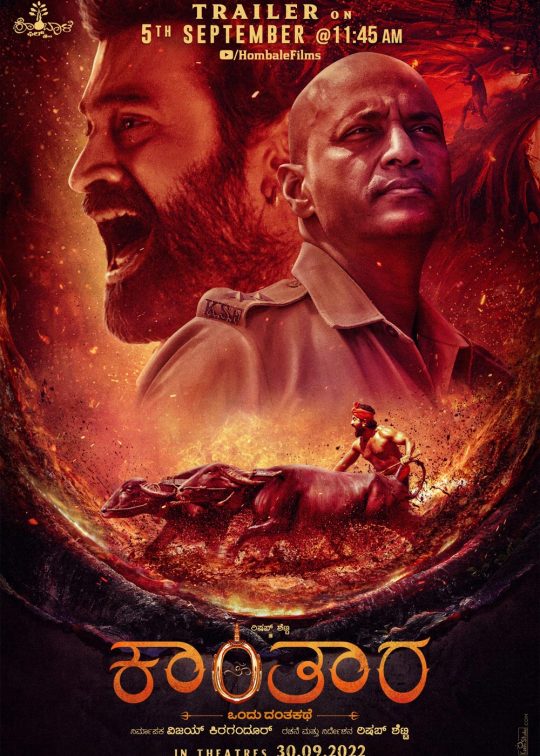
For the benefit of those who read this, if anyone will, I will not go into the plot of the film and stick to what I took away from it.
The first half of the film (pre-interval) builds the story, giving foundation to the plot and introducing the practices of the people while the second half (post-interval) more directly engages the viewers with the mystery of ownership, entitlement, and beliefs in divinity. The acting of Rishabh Shetty (Shiva, in the film) and others is instrumental in engaging the viewers and so are the sound effects (if a bit louder and harsher than I expected). What I found most impressive however were the visuals: the set, the costumes, and the filming in creative sequences that elevated normal scenarios. But the takeaway from this film, for me, was the thoughts it left me with.
The film asks very pointed and troubling questions: how influential is divinity in deciding who gets to live and how? Is it even relevant to the modern context for our beliefs to be justified? Why should one even have to believe in 'a' divinity to be a participant in a culture?
After coming out of the theater the only thing I could think of was, just how can we explain the things we term as 'mystical', 'magical', and 'bizarre'? If science - and psychology to an extent - cannot find an answer to these events, does it mean immediately that they are hoaxes? (I have a degree in Engineering which makes me a life-long discipline of the sciences, and I still have trouble believing in divinity but unexplainable events only serve to conclude such concepts can exist in the world)
There are many cultures across the globe similar to Indic culture that highlight the role of nature in the lives of people. But I am writing today as a member of the Indic culture, as a Kannadiga, which is alive in every action, and outlook of the world it inspires its members to have. I am proud to say that this film encapsulates the essence of culture, its importance, and its very imprint on societies. Rishabh Shetty, sir thank you for bringing such a film to life and for giving the world an opportunity to learn what our corner of the world has to offer to the magnificence that is life.
#Kantara#rishabh shetty#Kannada films#I absolutely would watch this film again and again and highly recommend that everyone watch it as well
53 notes
·
View notes